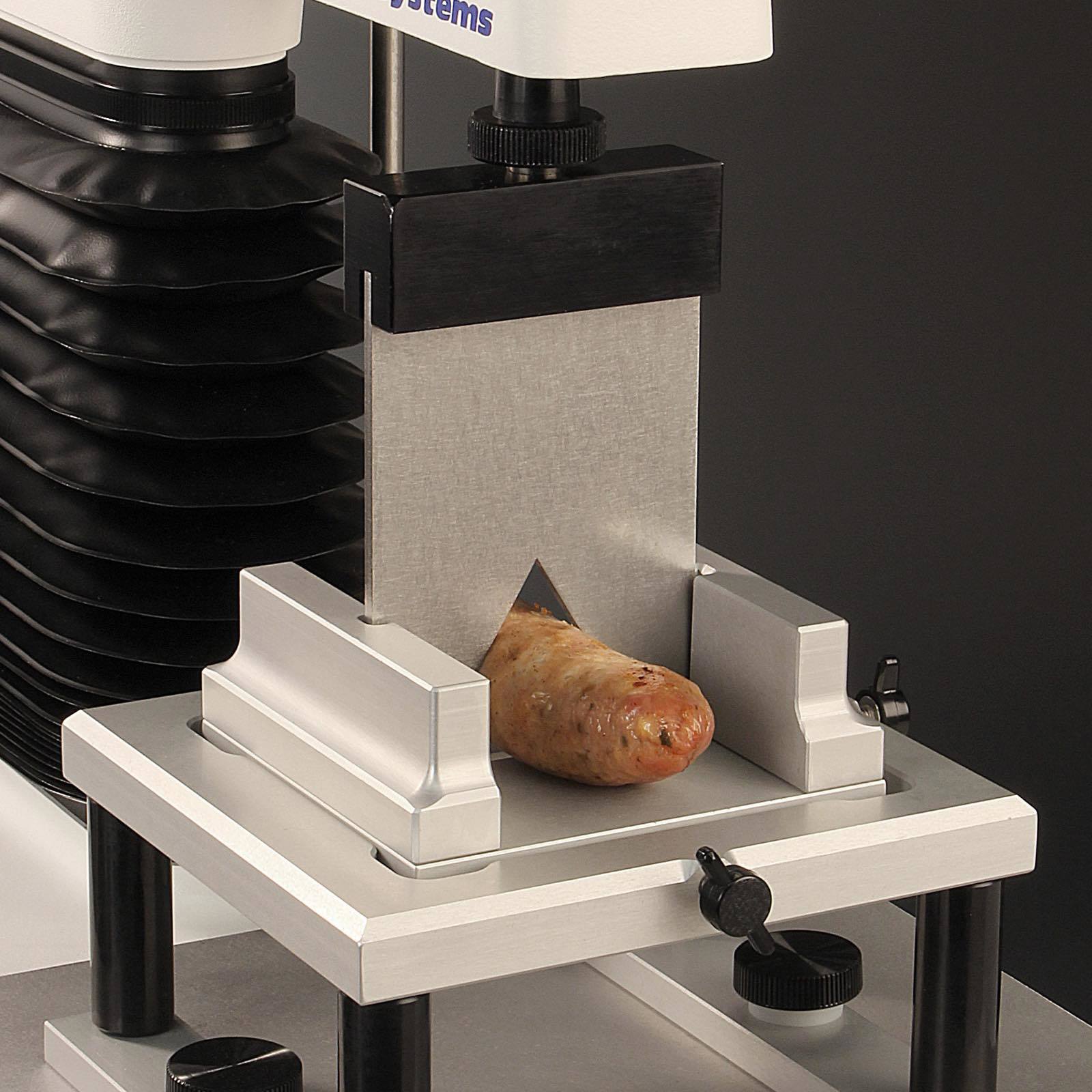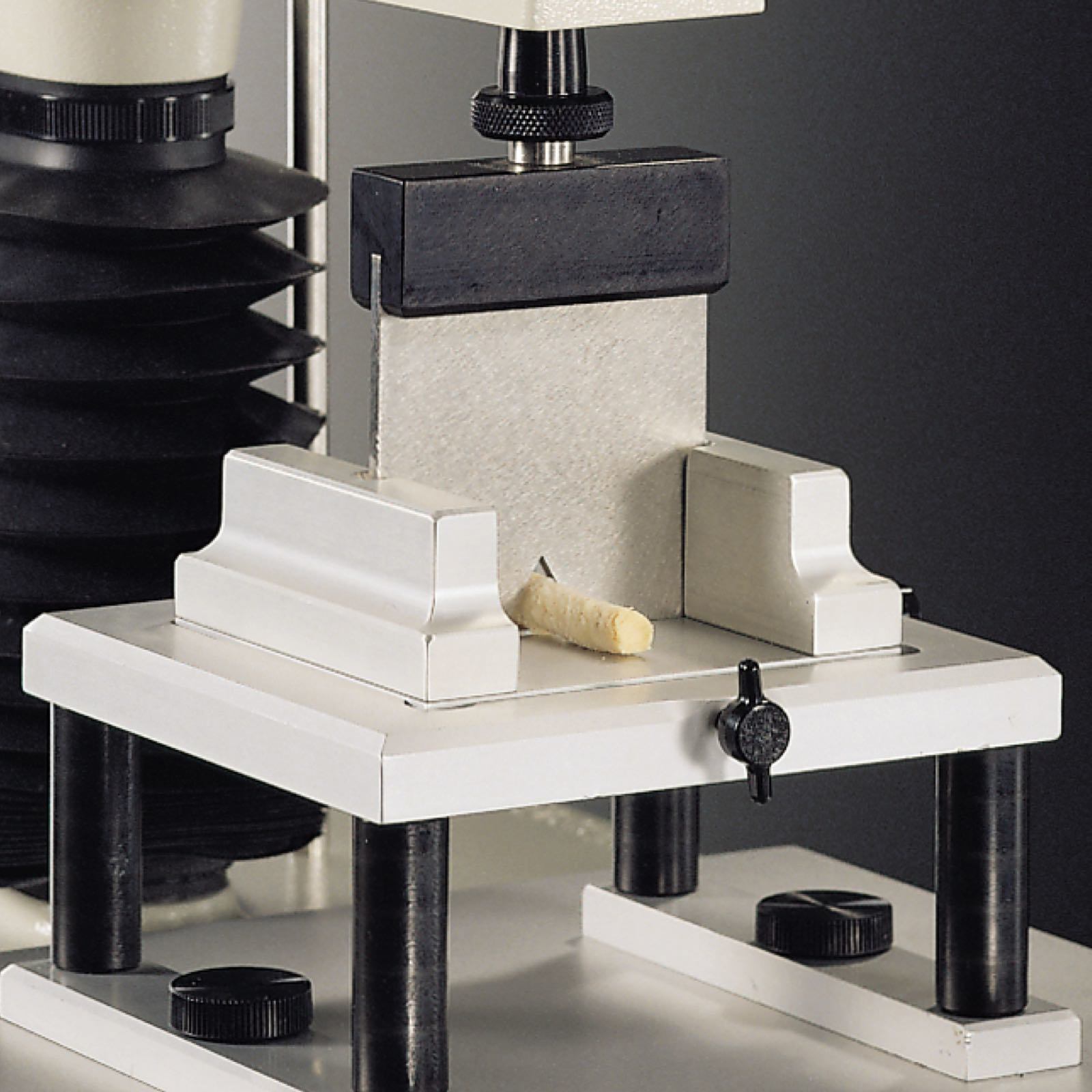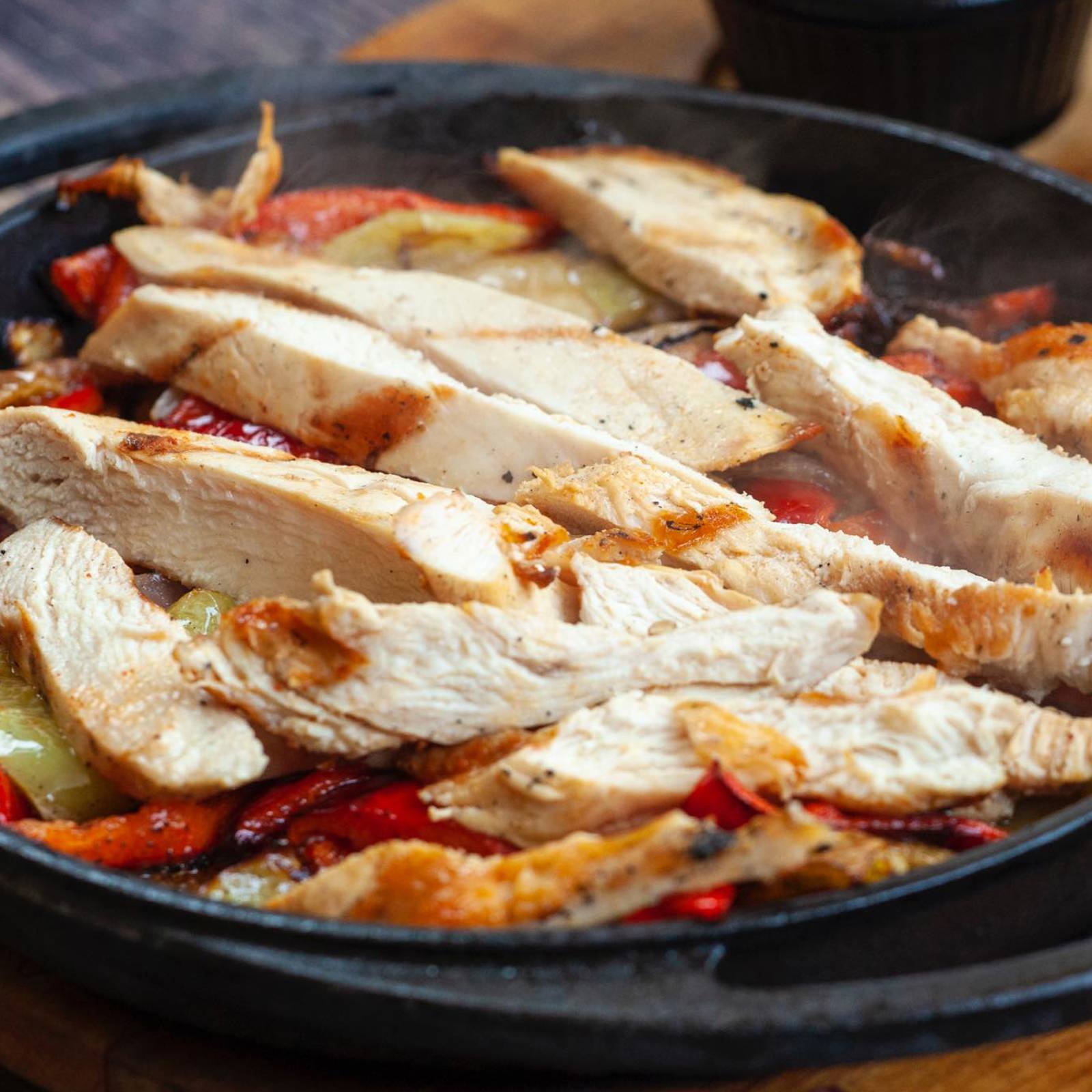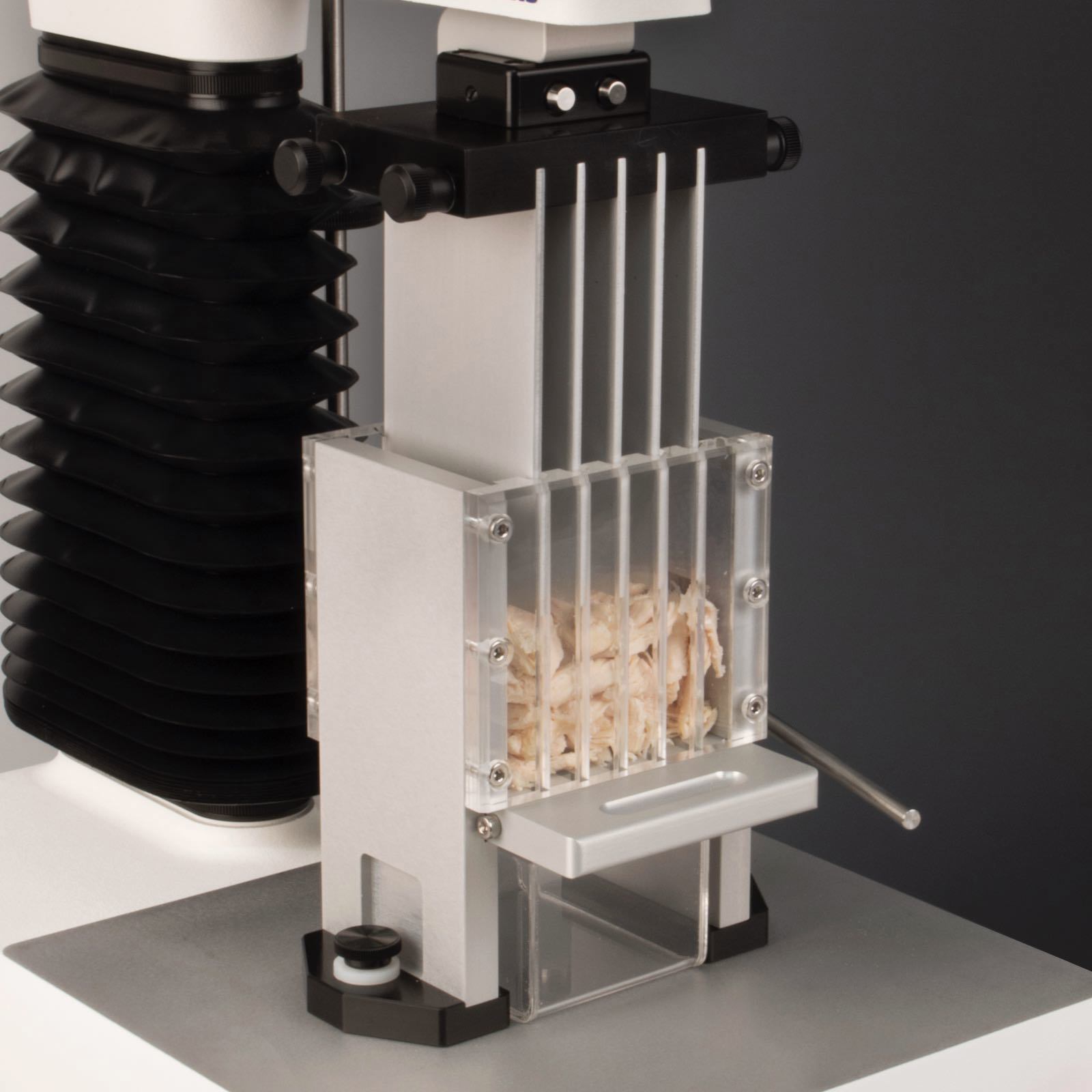
Measuring quality parameters in the poultry and egg industry – Cooked chicken methods
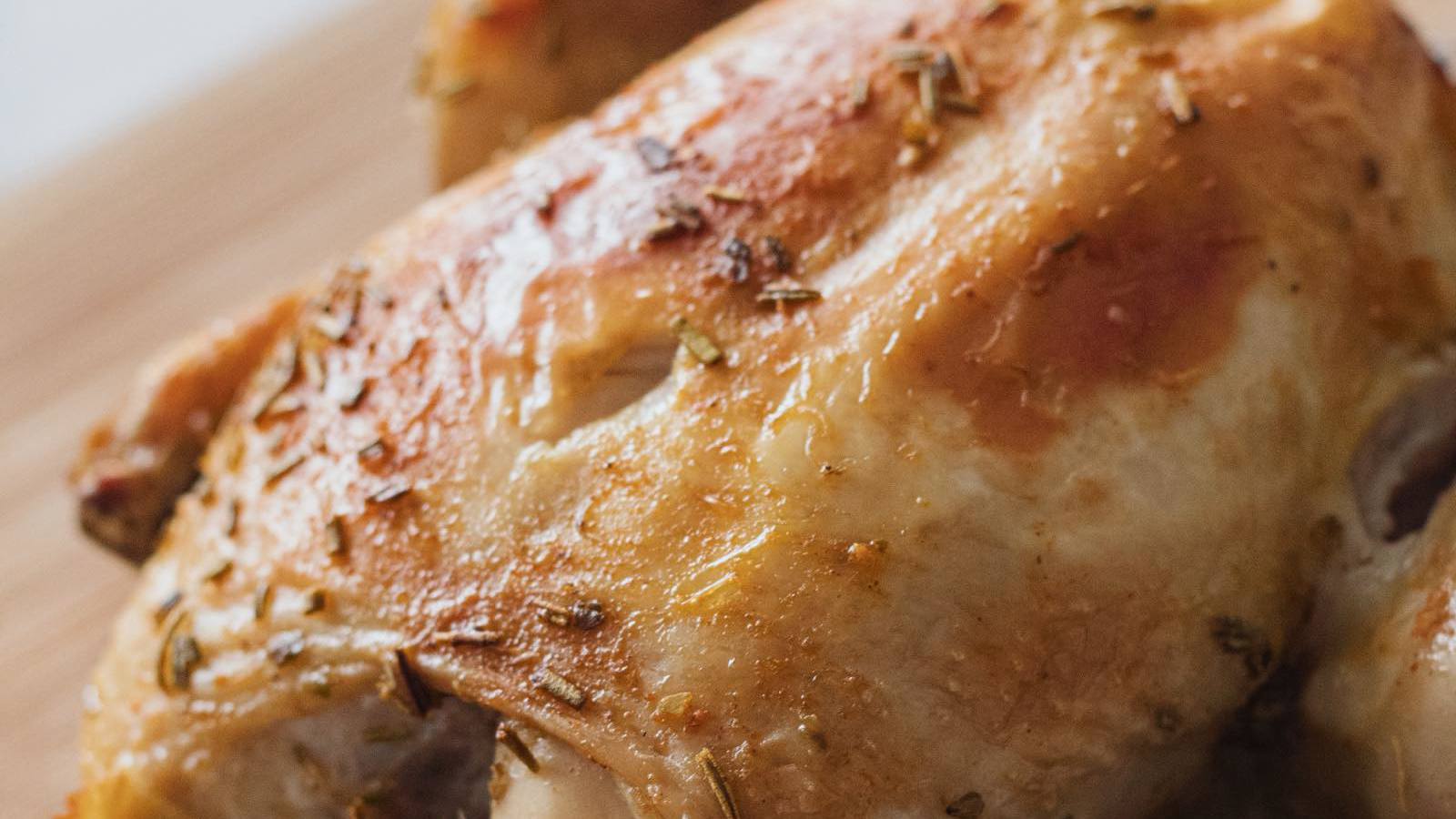
Warner-Bratzler: Cored cooked chicken meat samples
Coring is a frequently-used method for creating a meat sample with consistent dimensions. The Warner-Bratzler Blade is well-suited to testing these samples, or any samples with a constant circular crosssection, including sausages.
It is the most common biting or shearing system for the assessment of meat and meat products. This blade is particularly useful for providing a larger cutting surface around the product at the start of the test by means of its triangular notch in the middle of the blade, compared to a straight blade. When this blade is used along with a slotted base insert, it is able to cut through the entire sample.
The primary result obtained from this test is the work of shear – the area under the force-distance graph, representing the energy needed to cut through the sample. An increase in this parameter might be due to factors such as increased connective tissue or muscle fibre strength or geometry.
Published research examples that use this test:
- Functional properties of marinated chicken breast meat during heating in a pilot-scale radio-frequency oven – At the University of Georgia researchers used their TA.XTplus Texture Analyser equipped with a Warner-Bratzler Blade to compare quality of pre-heated and heated marinated breast samples.
- Quality parameters of chicken breast meat affected by carcass scalding conditions – Scientists from the State University of Londrina used their TA.HDplus Texture Analyser to measure shear force of samples using the Warner-Bratzler attachment.
Kramer Shear Cell: Cooked chicken samples
The assessment of cooked fillet texture is often challenging due to the non-uniform nature of samples and there may be structural elements present that show large local variations. Any two chicken breasts or chicken strips may have a different shape or microstructure that would cause tests of each sample to give incomparable results, even if they were very similar to a consumer. Consequently, these samples are best tested in bulk. When a large number of pieces are tested together, an averaging effect is created, which is representative of the average behaviour of that sample type.
The Kramer Shear Cell is the ideal equipment for measuring cooked chicken fillets or strips in bulk. This fixture uses a stationary rectangular box with slots in the bottom to hold the sample and a moving head composed of 5 or 10 blades to drive through the test specimen. Pieces are placed into the cell to the same filling volume or by weight, and the blades positioned at a constant position above the sample surface. The blades then move down into the sample compressing, shearing and extruding the bulk to a point close to, or slightly through, the base of the cell.
The maximum force and area under the curve are usually recorded and taken as an indication of bulk firmness. The area under the curve is usually termed the ‘work of shear’ – a larger value indicating a firmer sample. This measurement may also be used for other chicken products, such as livers, or cooked breaded/battered poultry.
Published research example that uses this test:
Quality changes in chicken livers during cooking – Researchers from Washington State University used their TA.XTplusC Texture Analyser along with a Kramer Shear Cell to measure shear force.
Part 3 in a 6 part series on measuring quality parameters in the poultry and egg industry. Read Part 1 – Introduction, Part 2 – Uncooked poultry methods, Part 4 – Bones and intestines, Part 5 – Processed chicken products and Part 6 – Egg properties.

